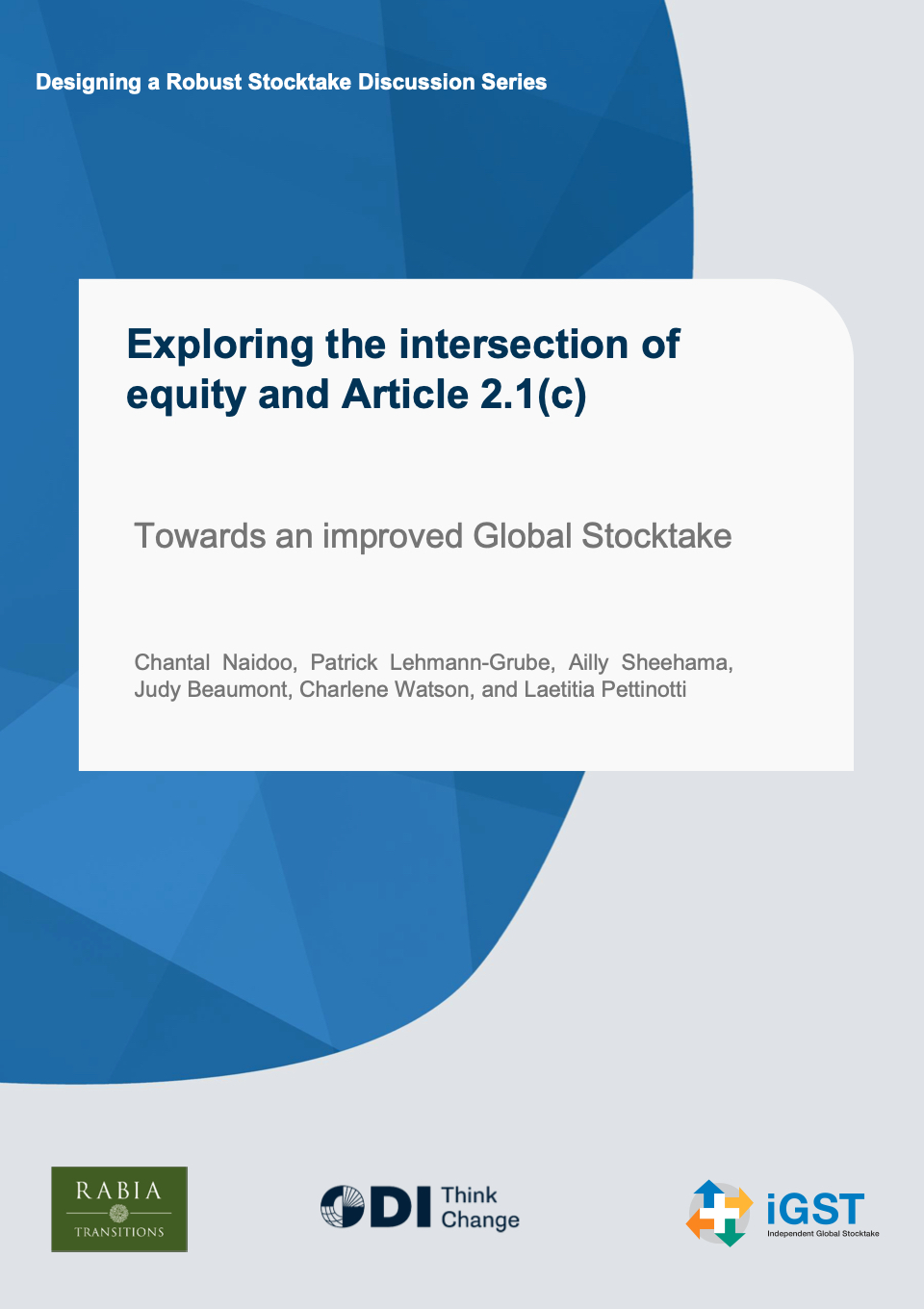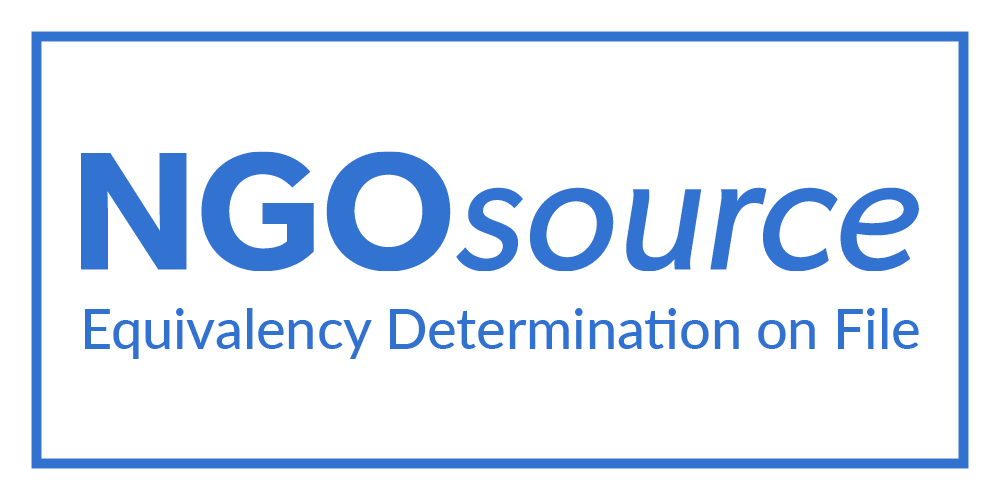View this paper on the ODI website
Recommended citation: Naidoo, C.P., Lehmann-Grube, P., Sheehama, A., Beaumont, J., Watson, C., Pettinotti, L. “Exploring the intersection between equity and Article 2.1c of the Paris Agreement” Rabia Transitions Initiative and Overseas Development Institute. Part of the iGST Designing a Robust Stocktake Discussion Series.
Bringing together finance flows and equity, the first GST seeks to measure collective progress on Article 2.1(c) of the Paris Agreement ‘in light of equity.’ The measurement challenge is particularly acute and Article 2.1c is the most challenging to measure "collective progress" under, due to low engagement and agreement on its scope and application. Though equity is a principle embodied in Paris Agreement, how it applies to Article 2.1c has not been considered as yet. Despite this, the UNFCCC’s Standing Committee on Finance (SCF) in its 2020 Biennial Assessment Technical Report applied a framing for mapping actions relevant to Article 2.1(c):
- Actions: What voluntary or mandatory actions ‘make finance flows consistent’?
- Object: What finance flows are impacted as a result of such actions?
- Effects: Do such actions to make different finance flows consistent have particular effects/impacts, especially in support of Articles 2.1(a) and 2.1(b)? Are such effects consistent?
- Goal: What is the goal of the actions, and are the actions consistent in light of such a goal?
Using this framing and the CBDR-RC principles on equity the report considers the interplay between equity and Article 2.1(c) through the lens of three examples: the Race to Zero campaign; the Global Shield of the (V20); and the Just Energy Transition Partnerships (JETPs). The paper explores these case studies using the SCF’s 2020 Biennial Assessment framing questions and the CBDR-RC principles on equity.
Key findings:
- Assessing progress on Article 2.1(c) requires an equity-centred approach to finance flows and the notion of ‘progress’ for finance must have qualitative metrics.
- Consistency of finance flows requires an approach that embeds rights-, principles-and needs-based and people-centred financing dimensions.
- Consistency implies a particular profile of finance flows, which is beyond project-specific interventions, but also finance flows that support portfolios of investment and appropriate funding terms and conditions.
- Finance flows must explicitly adopt the principle of CBDR-RC as the basis for action.
- Finance flows need to be needs-based and country-owned.
- Intra-regional, intra-governmental and community-level finance flows need to be included.
- Finance flows need to prioritise inclusivity, gender sensitivity and the needs of vulnerable communities.
- Transitioning to a sustainable, low-emission development path is a disruptive process with equity impacts on society and the economy that must be recognised.
- New financing terms and conditions are necessary that reflect needs, rights and accounts for the side-effect equity considerations of climate policies.
- Finance flows need to mainstream just transition components within all interventions and actions.
- Transformative and system-focused finance flows are essential to enable consistency in finance flows given that the nature of actions to be financed requires pathway shifts.
- National circumstances will influence the ability to absorb or adjust to the additional costs of shifting to new pathways and also determine the need for additional finance flows.
- The current GST, and future iterations and engagements on Article 2.1(c) in particular, need to reconsider baseline assumptions for assessing collective progress, so that the nuances of heterogenous responses are not diluted.
- Different starting points are inevitable and necessary to factor into the pursuit of nationally driven pathways.
- The roles of actors are different, and each has differential access to actions and capabilities.
- Qualitative effects of finance flows are different across actions.
- Different ways of assessing progress exist based on national and international perspectives.
- Distinguishing what constitutes progress in the current GST is essential, as with the question of progress at what cost, and who bears such cost.
- Financial systems are interconnected, and actions do not occur in a vacuum, which strengthens the emphasis on ‘in light of equity’ as a primary driver for understanding progress on Article 2.1(c).
To close, the report highlights certain points that are relevant for the multilateral development bank reform agenda:
- Adaptation, resilience and recognition of loss and damage should be factored into the reform agenda early in its formulation to avoid a bias towards mitigation efforts.
- There is a place for heterogeneous approaches, as this paper shows, given the difficulties in measuring or assessing ‘collective progress.’ Short-term measures useful for advancing particular outcomes in particular constituencies and medium- to longer-term actions also needed in parallel.
- Equity perspectives highlight the detrimental economic effects, and further social vulnerabilities, of transformative policies. The absence of a rights- and principles-based as the financial sector transforms would be harmful to society, especially given the negative equity side-effects of climate policies



